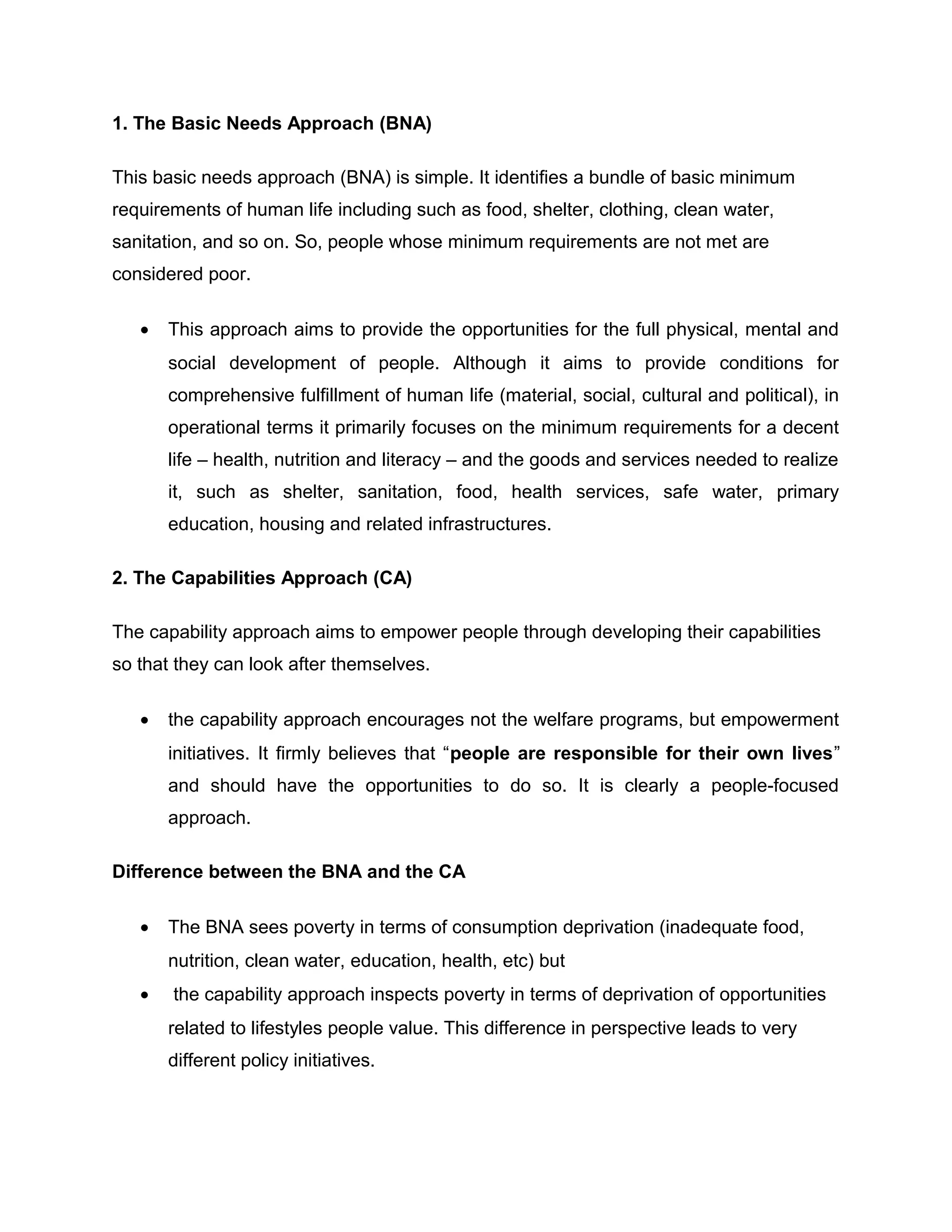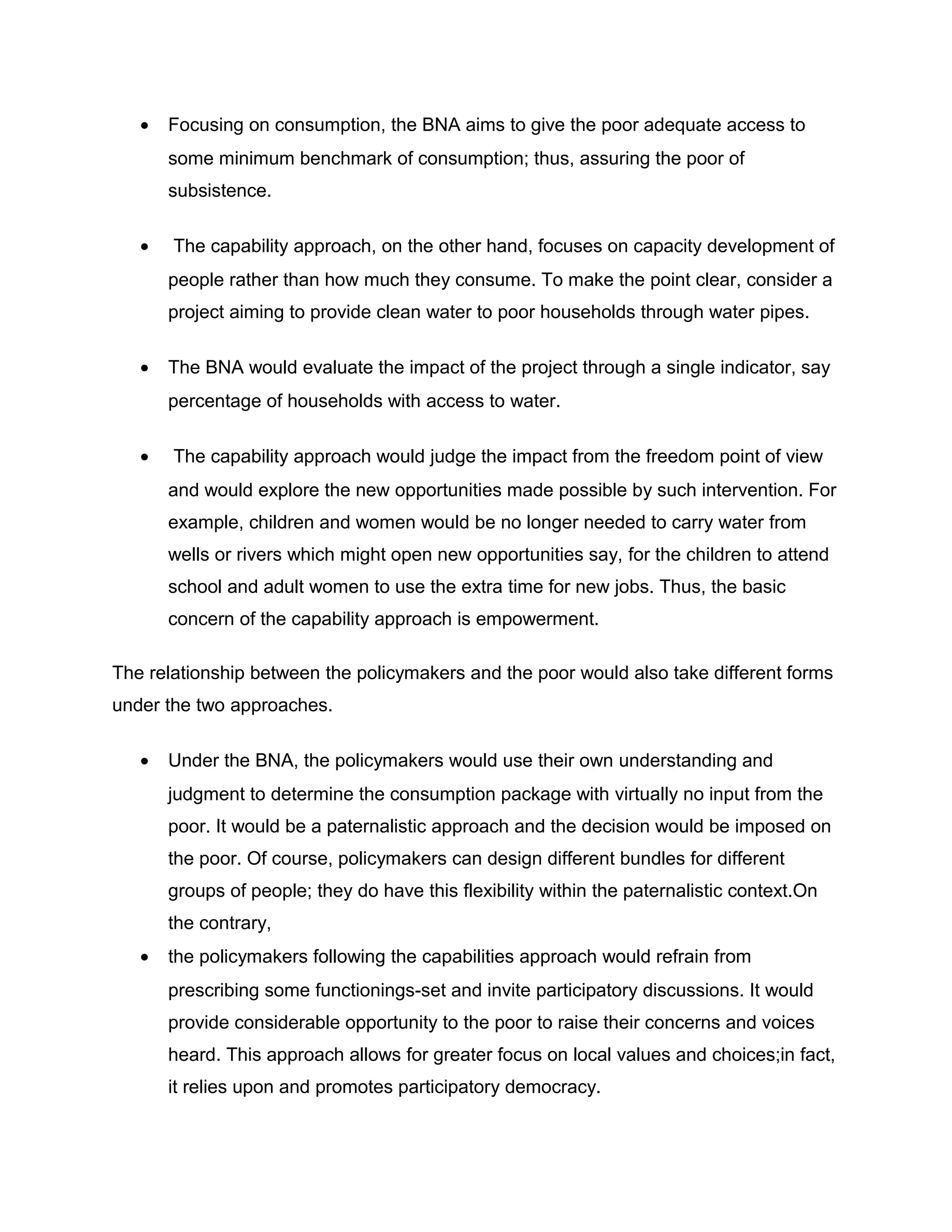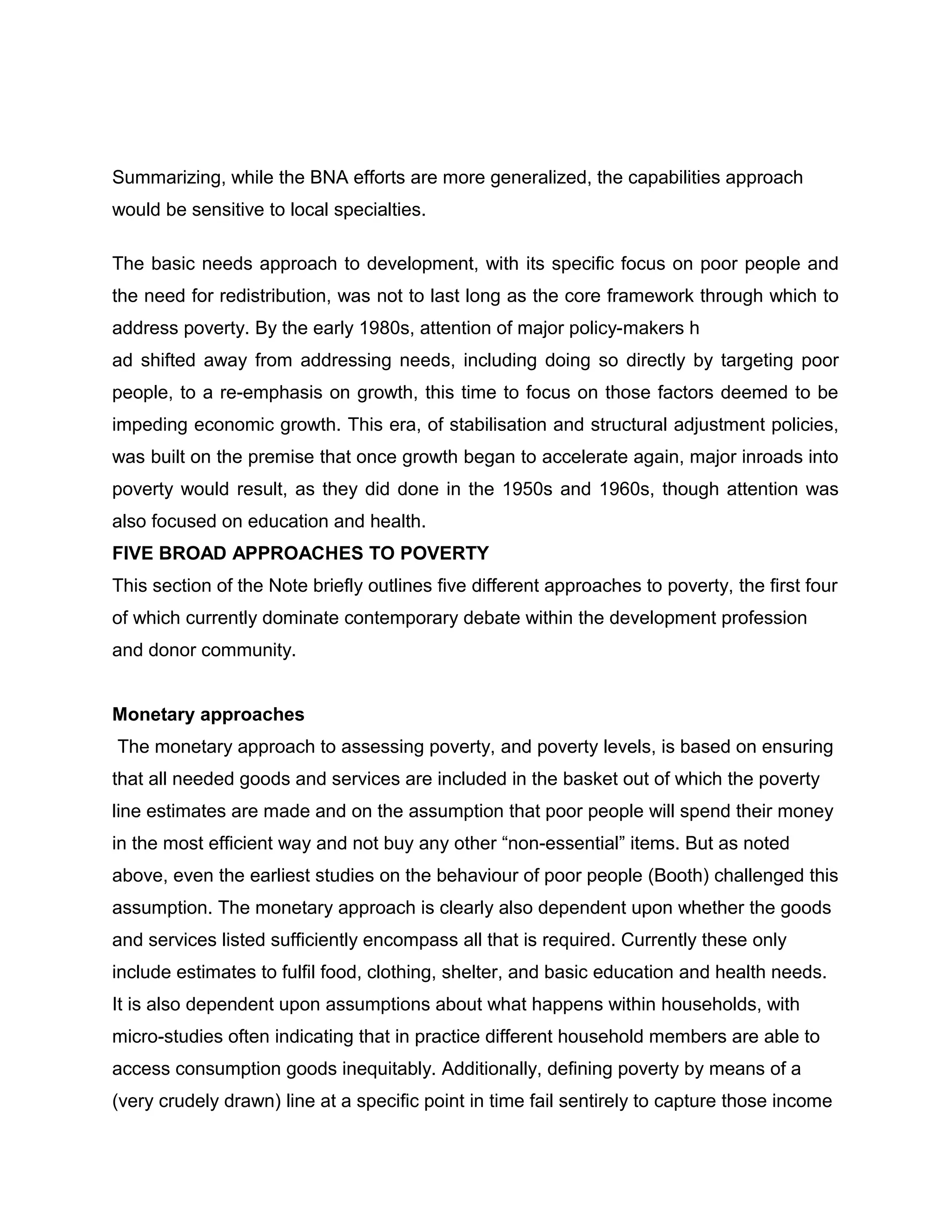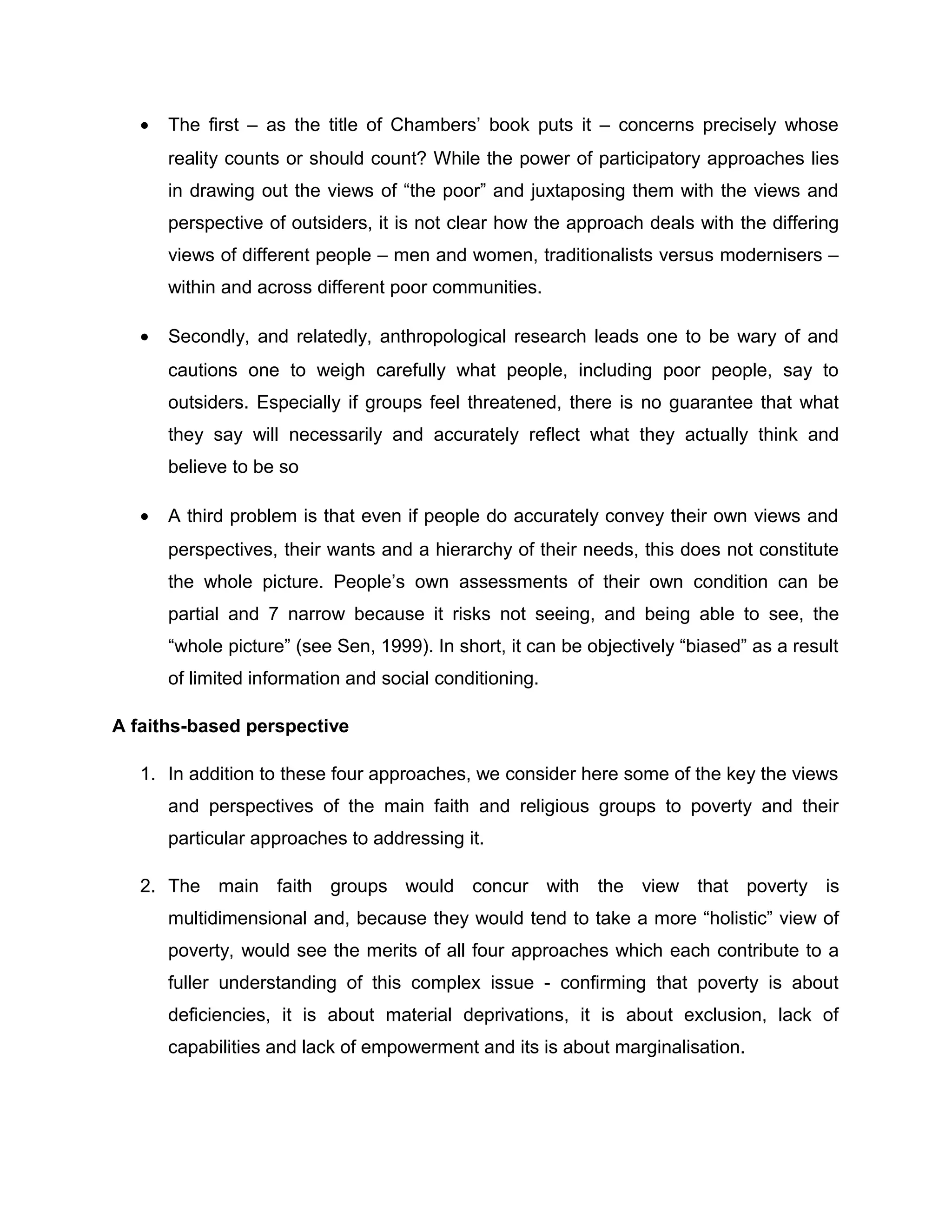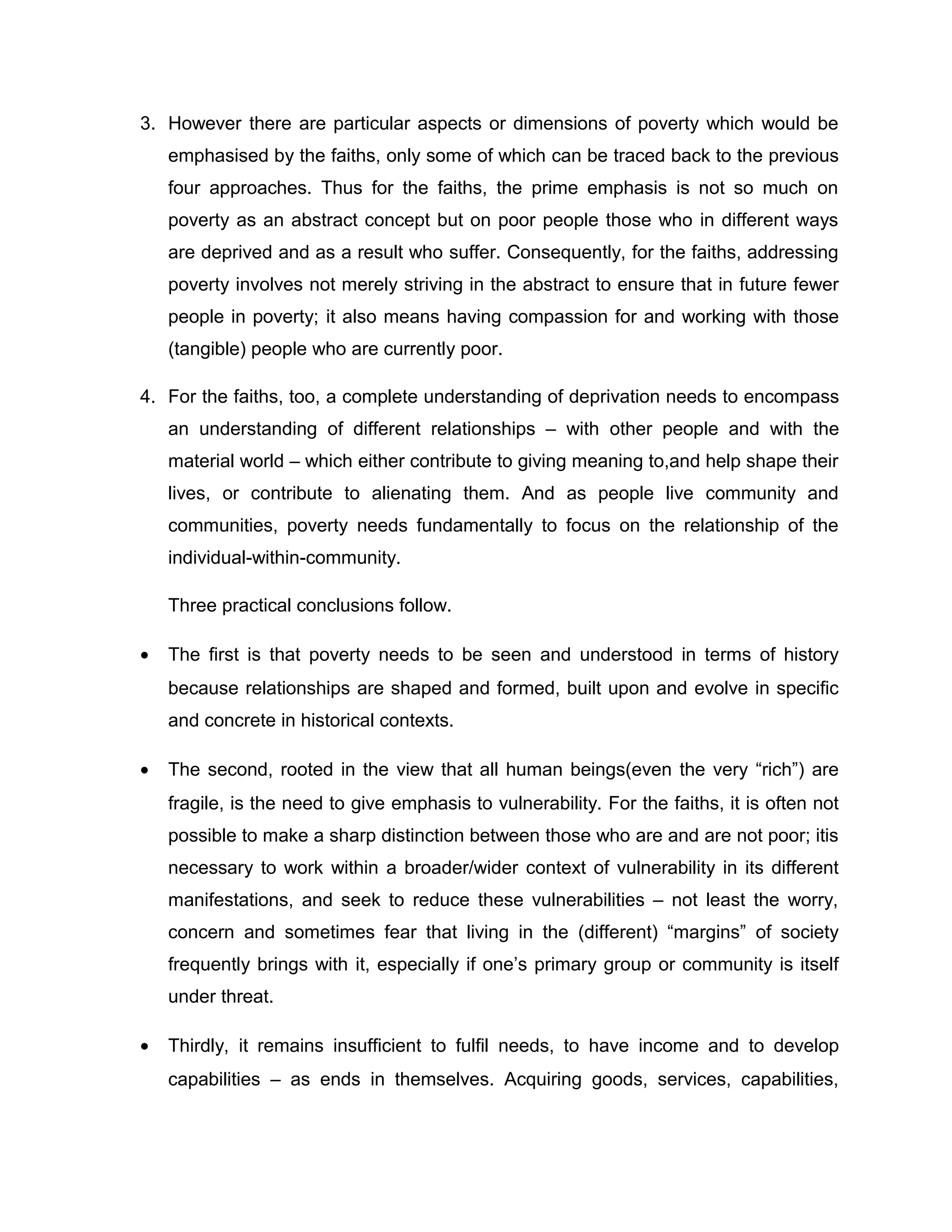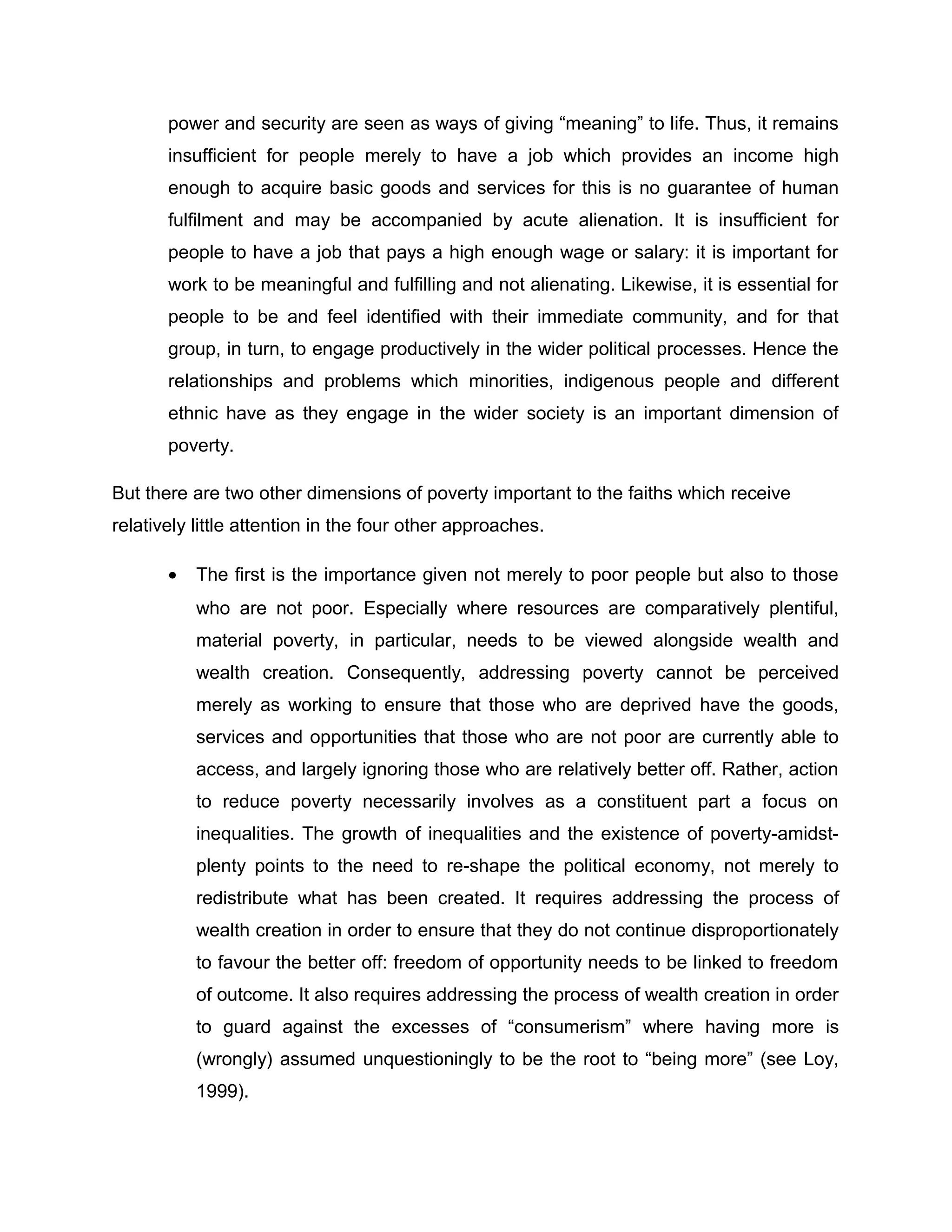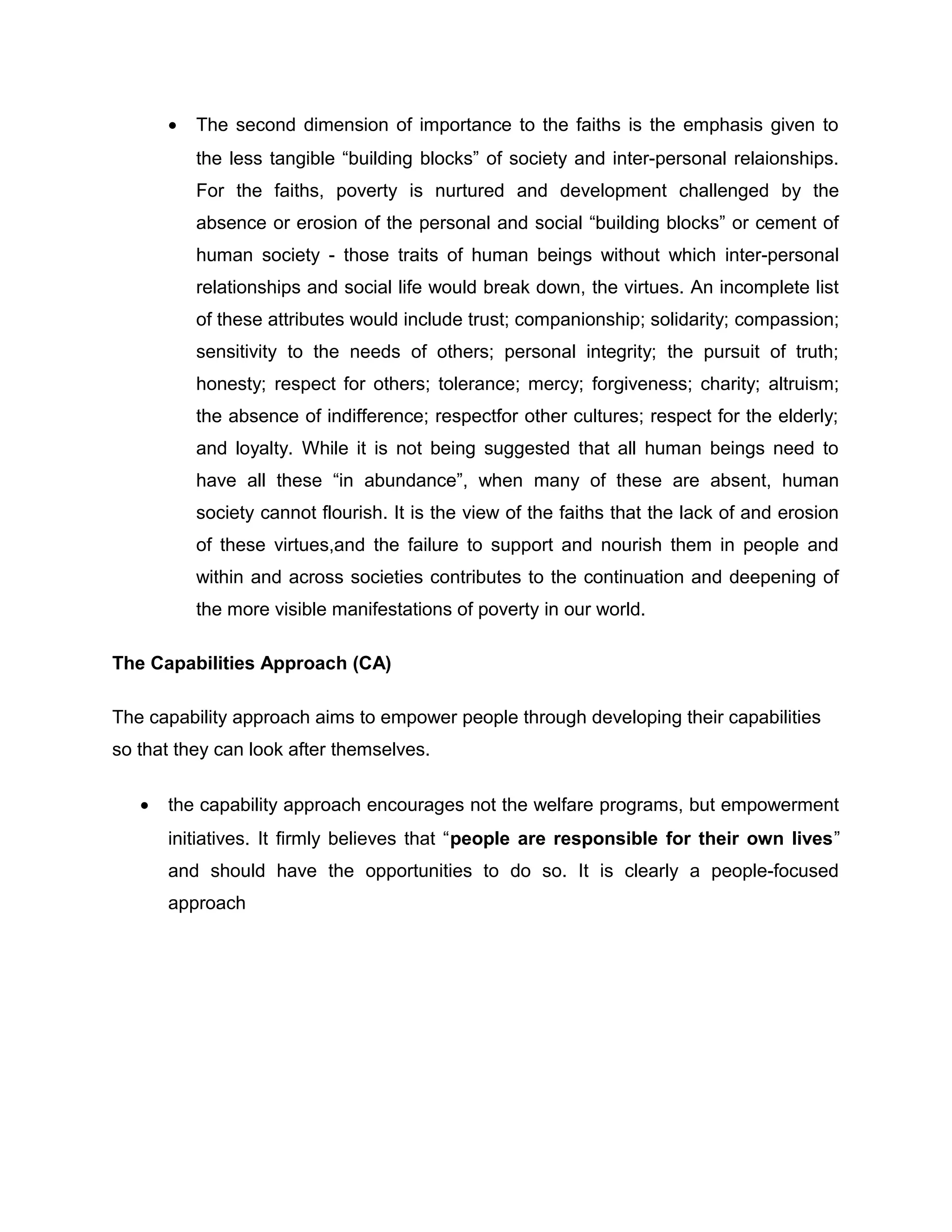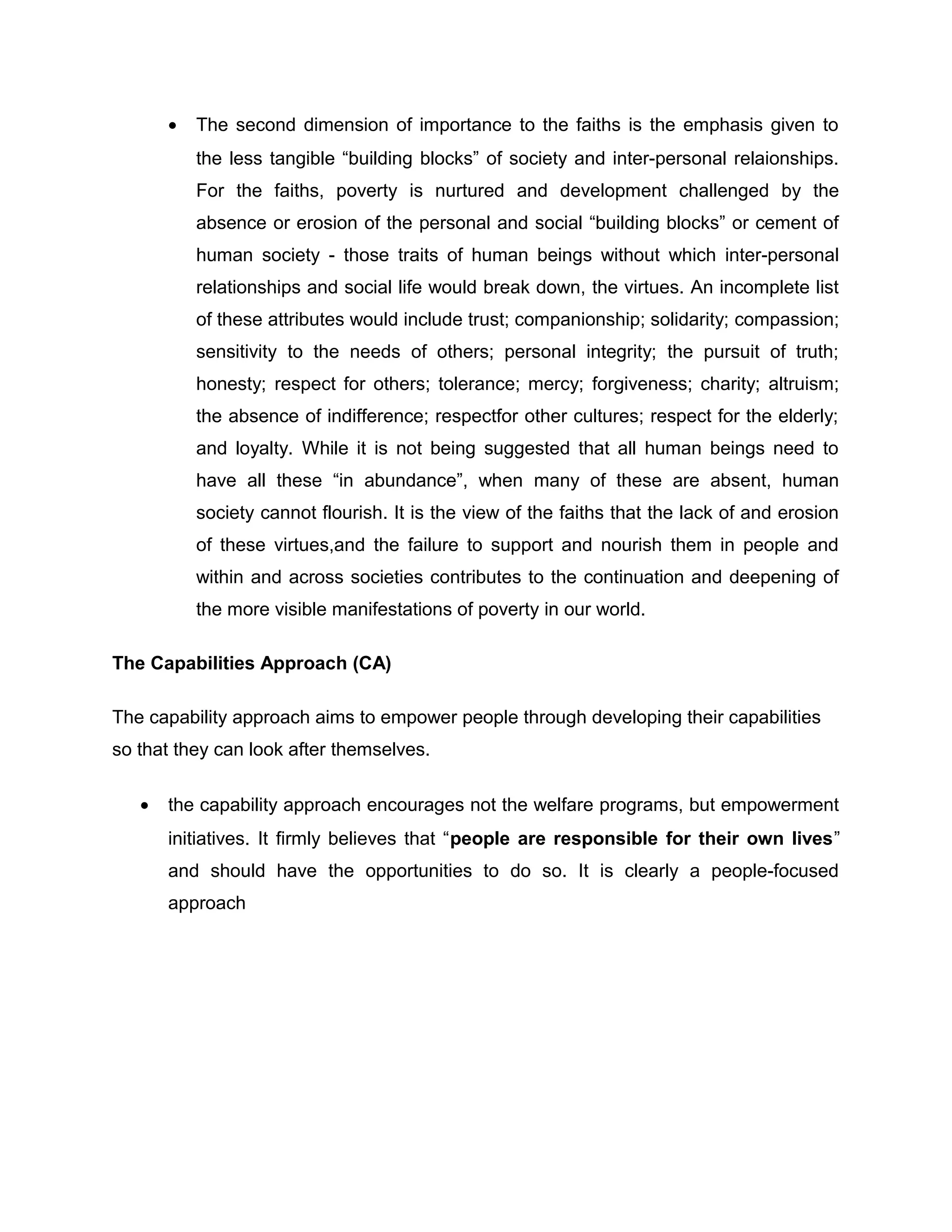This document discusses and compares several approaches to understanding and addressing poverty:
1. The Basic Needs Approach (BNA) focuses on providing minimum requirements for food, shelter, etc. The Capabilities Approach (CA) aims to empower people through developing their capabilities.
2. Other approaches discussed include social exclusion approaches, participatory poverty approaches, and monetary approaches.
3. A faith-based perspective sees poverty as multidimensional and emphasizes compassion for those in poverty, as well as relationships and virtues within communities.
